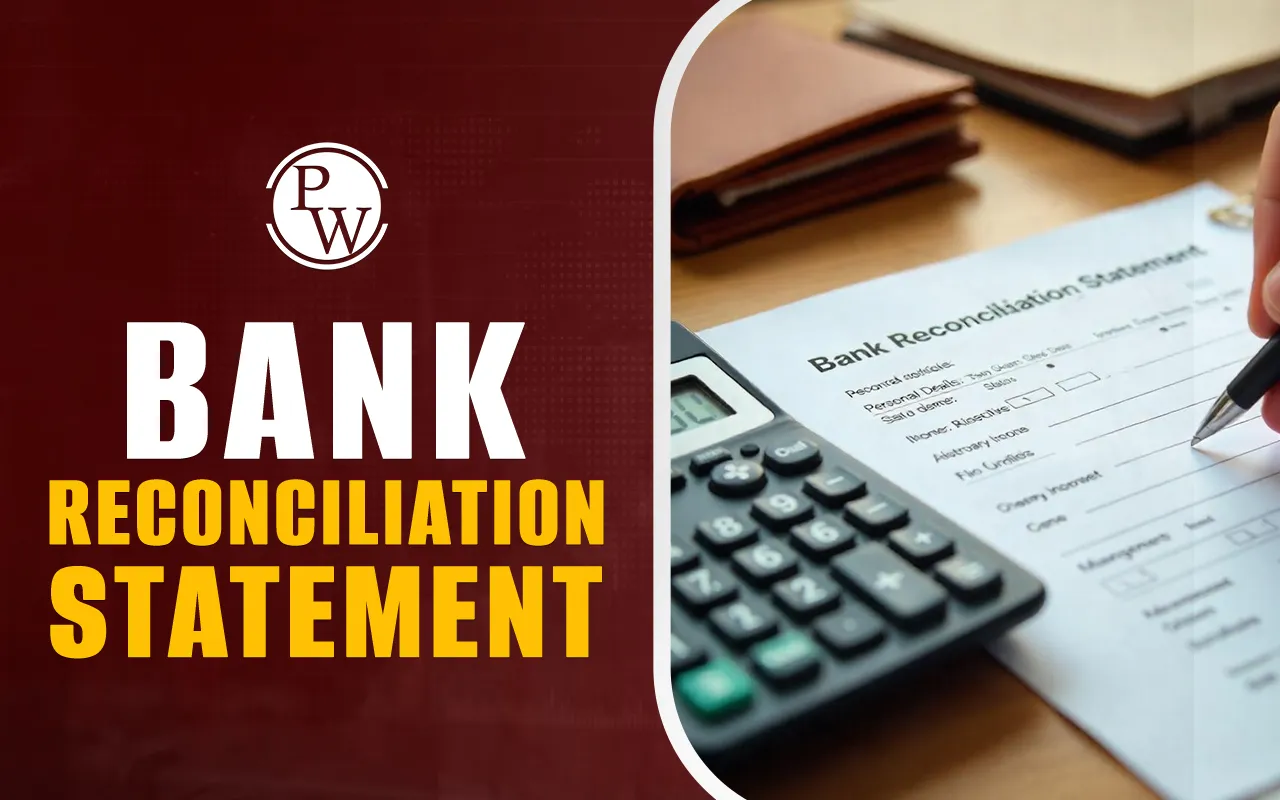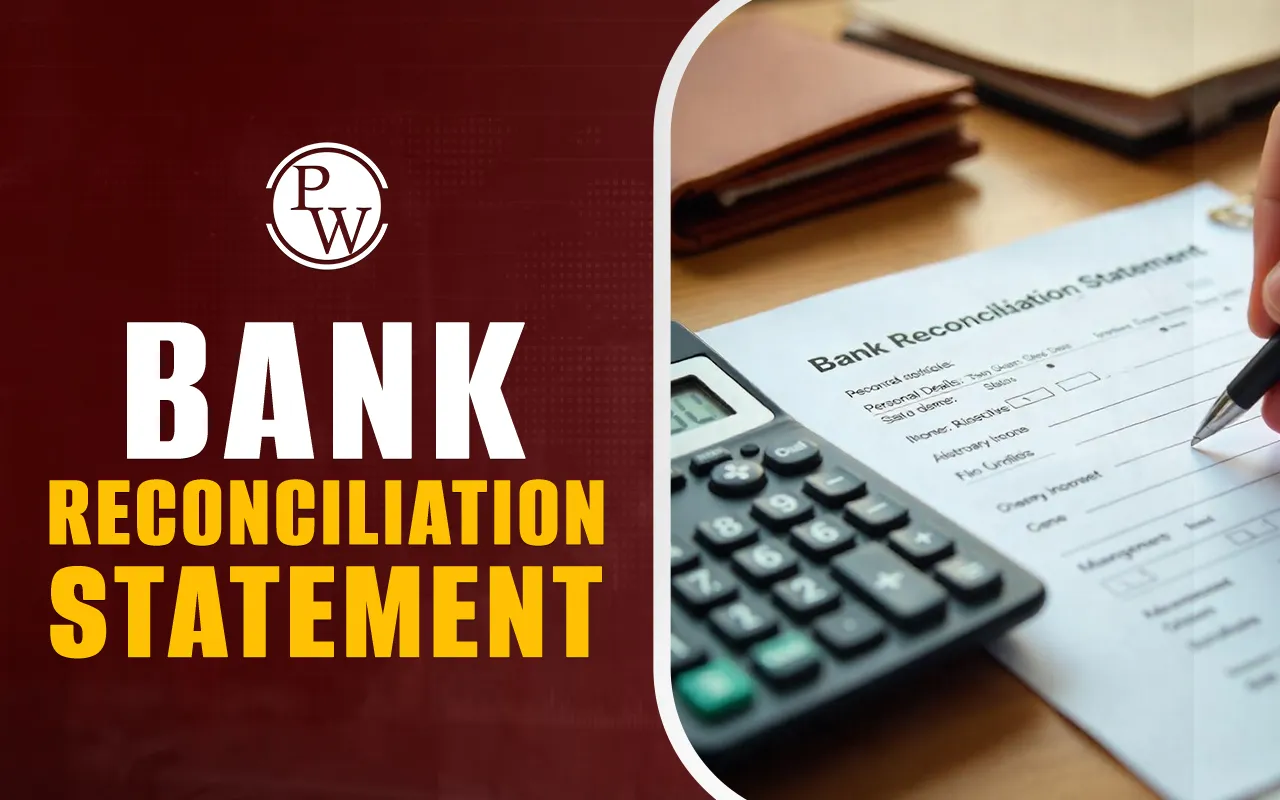
Bank Reconciliation Statement plays a vital role in maintaining the accuracy of financial records for both individuals and businesses. It acts as a bridge between the cash book maintained by an entity and the bank statement provided by the financial institution. While businesses handle numerous transactions daily, discrepancies often arise between the internal records and the bank statement. This is where a Bank Reconciliation Statement becomes essential.
In this article, we will answer the important question: What Is a Bank Reconciliation Statement? We will also discuss how to do a bank reconciliation effectively. Whether you are a student of commerce, an aspiring accountant, or a business owner, understanding the Bank Reconciliation Statement is critical for accurate financial reporting and effective cash management.
What Is a Bank Reconciliation Statement?
A Bank Reconciliation Statement is a summary document that matches the balances in an entity's accounting records to the corresponding information on a bank statement. It helps to identify any differences between the cash records and bank records, enabling necessary adjustments to ensure both are in agreement.
This process is particularly useful in identifying timing differences, unrecorded transactions, bank errors, or fraudulent activities. Accountants and auditors often rely on the Bank Reconciliation Statement as a tool to verify the accuracy and integrity of financial data.
Reasons for Preparing a Bank Reconciliation Statement
Creating a Bank Reconciliation Statement serves multiple purposes:
Error Identification: It highlights any data entry errors in either the cash book or bank statement.
Fraud Detection: The process helps in spotting unauthorized transactions.
Cash Flow Control: It ensures proper monitoring of the inflow and outflow of cash.
Expense Tracking: Businesses can track bank charges, interest income, and other transactions accurately.
Financial Statement Accuracy: It ensures that the balances reported in financial statements are accurate and reliable.
For those wondering how to do a bank reconciliation, understanding the reasons behind it provides the right motivation and context.
How Often Should You Prepare a Bank Reconciliation Statement?
The frequency of preparing a Bank Reconciliation Statement depends on the volume of transactions and the entity's operational scale. While many businesses prefer a monthly reconciliation, those with higher transaction volumes may benefit from conducting this process weekly or even daily. Regular reconciliation supports the timely detection of errors and enhances cash flow management.
Steps on How to Do a Bank Reconciliation
Here’s a step-by-step guide on how to do a bank reconciliation:
Step 1 Collect Relevant Documents: Gather the required financial documents, including:
- Bank statements
- Cash books
- General ledger
- Invoices and receipts
Step 2 Compare Opening Balances: Start by comparing the opening balance in your records with the opening balance of the bank statement. Any difference must be noted and investigated.
Step 3 Match Transactions: Go through each transaction and match:
- Deposits with credits in the bank statement
- Withdrawals, payments, or charges with debits in the bank statement
Step 4 Identify Discrepancies: Highlight transactions that appear in one record but are missing in the other. Common discrepancies include:
- Outstanding checks
- Bank fees not yet recorded
- Direct deposits or standing instructions
Step 5 Adjust Your Records: Make necessary adjustments in your internal records for any missing or incorrect entries. For example, if the bank has charged service fees, ensure it is recorded in your ledger.
Step 6 Reconcile the Balances: After adjustments, compare the revised balance in your books with the balance in the bank statement. If they match, your reconciliation is complete.
Step 7 Document the Reconciliation: Keep a copy of the reconciliation statement and related documents. Maintaining proper documentation helps in future audits and ensures transparency.
Example of a Bank Reconciliation Statement
Consider a business with the following transactions:
- Opening balance: ₹145,000
- Deposits from clients: ₹10,000
- Outstanding check to supplier: ₹15,000
- New cash deposit: ₹2,500
- Error correction from last month: ₹3,000 (deduction)
- Bank charges: ₹50
- Interest income: ₹100
The reconciliation will look like this:
| Bank Reconciliation Statement Example | |
| Transaction | Amount (₹) |
| Opening Balance | 145,000 |
| + Client Deposits | 10,000 |
| - Outstanding Check | (15,000) |
| + Cash Deposit | 2,500 |
| - Error Correction | (3,000) |
| - Bank Charges | (50) |
| + Interest Income | 100 |
| Final Balance | 139,550 |
This final balance should now match the bank statement after including these adjustments.
A Bank Reconciliation Statement is an essential component of sound financial management. It provides clarity and confidence in the financial reporting process by aligning internal records with the bank’s data. Whether you are wondering What Is a Bank Reconciliation Statement? or trying to learn how to do a bank reconciliation, the steps and examples provided above offer a clear path.
Regularly preparing a Bank Reconciliation Statement ensures timely detection of discrepancies, promotes financial accuracy, and enhances trust in business reporting. For businesses aiming to improve their internal controls, incorporating a consistent reconciliation process is a strategic step.
By following these steps diligently, you can maintain error-free books and better financial oversight cornerstones of responsible financial management.
PW BFSI Course
And if you’re passionate about mastering personal finance, banking operations, or pursuing a career in the financial sector, don’t miss out on PW BFSI Courses. These industry-relevant programs equip you with practical knowledge and skills for the ever-evolving banking, finance, and insurance sectors.
PW BFSI Courses help you confidently handle financial products like checking vs. savings accounts, investment options, loans, and more. It’s time to boost your career and financial literacy.
Bank Reconciliation Statement FAQs
What is a Bank Reconciliation Statement?
Why is a Bank Reconciliation Statement important?
How often should I prepare a Bank Reconciliation Statement?
What are the common reasons for differences in bank reconciliation?














